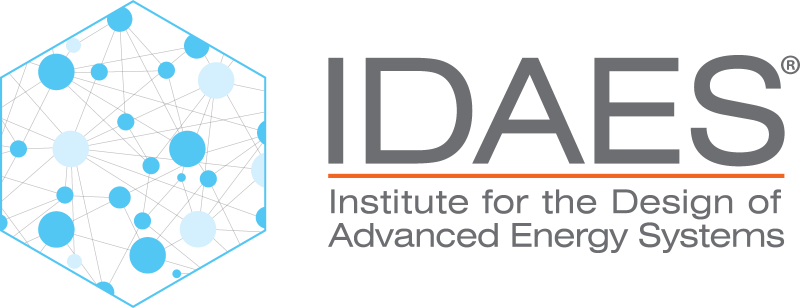FcTP#
State Definition#
This approach describes the material state in terms of total component flow (\(F\): flow_mol_comp), temperature (\(T\): temperature) and pressure (\(P\): pressure). As such, there are \(2 + N_{components}\) state variables.
Application#
This approach is similar to using total flow rate and mole fractions as state variable, and is generally accessible to the user as the state variables are easily measured and understood. Compared to using total flow rate and mole fractions, this approach changes how the bilinear terms (flow rate times mole fraction) appear in the problem structure, and may result in improved performance for some applications. However, this approach has a number of limitations which the user should be aware of:
If the property package is set up for multiphase flow, an equilibrium calculation is required at the inlet of each unit, as the state definition does not contain information on multiphase flow. This increases the number of complex equilibrium calculations that must be performed, which could be avoided by using a different state definition.
State becomes ill-defined when only one component is present and multiphase behavior can occur, as temperature and pressure are insufficient to fully define the thermodynamic state under these conditions.
Bounds#
The FcTP module supports bounding of the following variables through the state_bounds configuration argument:
flow_mol_comp
temperature
pressure
Supporting Variables and Constraints#
In addition to the state variables, this definition of state creates a number of supporting variables and constraints.
Variables#
flow_mol_phase (\(F_{mol, p}\))
mole_frac_comp (\(x_{j}\))
mole_frac_phase_comp (\(x_{p, j}\))
phase_frac (\(\psi_p\))
Expressions#
An Expression is created for the total flowrate such that \(F = \sum{F_j}\)
Constraints#
In all cases, a constraint is created to calculate component mole fractions from the component flow rates.
Note
If only one component is present in the property package, this is simplified to \(x_j = 1\).
If the property package supports only one phase:
If the property package supports only two phases, the Rachford-Rice formulation is used:
If the property package supports more than two phases, the following general formulation is used:
Default Balance Types and Flow Basis#
The following defaults are specified for Unit Models using this state definition:
Material balances: total component balances
Material flow basis: molar flow
Energy balances: total enthalpy
